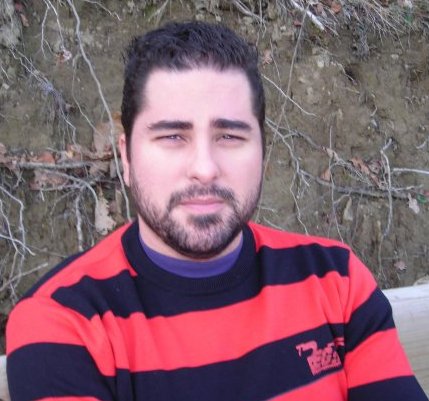Charge Transfer Between Donor-Acceptor Molecular Networks on Metal Surfaces
Dr. Jonathan Rodriguez, University Autónoma of Madrid, Spain
Info about event
Time
Location
iNANO meeting room 1590-231, Gustav Wieds Vej 14, 8000 Aarhus C

Dr. Jonathan Rodriguez, Department of Condensed Matter Physics, University Autónoma of Madrid, SpainCharge Transfer Between Donor-Acceptor Molecular Networks on Metal SurfacesOrganic charge-transfer (CT) complexes are molecular compounds mixing two species with different electron affinities: an electron donor (D) and an electron acceptor (A). Charge transfer processes between D–A complexes and metallic electrodes are at the heart of novel organic optoelectronic devices such as solar cells. In contrast with the existing exhaustive study of the bulk properties of CT solids, very little is known about the thin-film behaviour. The transition from bulk D-A complexes to ultra-thin films of monolayer thickness deposited on metals introduces a new phenomenology related to the organic–inorganic interface [2]. Effects like hybridization, CT with the surface and molecular level alignment become factors that may govern the electronic transport. Hence, the adsorption of an ultra-thin D–A layer on a metal opens a new field of research for the potential application of CT complexes as devices in the nanoscale. Simultaneous characterization of the interdependent structural and electronic properties is required for a thorough understanding of the D-A complexes under study [3]. Here, by combining both Scanning Tunnelling Microscopy (STM) and X-ray Photoelectron Spectroscopy (XPS) in situ, we can study the delicate balance that exists between intermolecular and molecule–substrate interactions, as well as the hybridization, and the charge transfer taking place in model donor–acceptor assemblies at metal-organic interfaces. By controlling the stoichiometry between tetrathiafulvalene (TTF, electrondonor) and two different electronaceptor tetracyanoquinodimethane (TCNQ), tetracyanoethylene (TCNE), and we can tune the both the structural and the electronic properties of a donor-acceptor system on Ag(111). We show that this system exhibits various structural phases, depending on the stoichiometry, each leading to different levels of charge transfer. These results demonstrate that atomistic studies on the growth of organic thin films under ultrahigh vacuum (UHV) conditions can lead to the kind of accurate control needed in order to optimize device characteristics. | |
| Host: Associate professor Jeppe Vang Lauritsen, Interdisciplinary Nanoscience Center, Aarhus Universitet |
